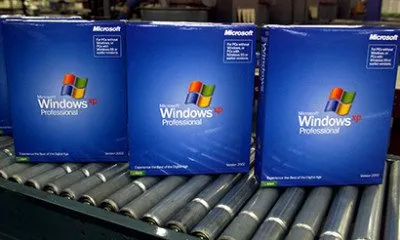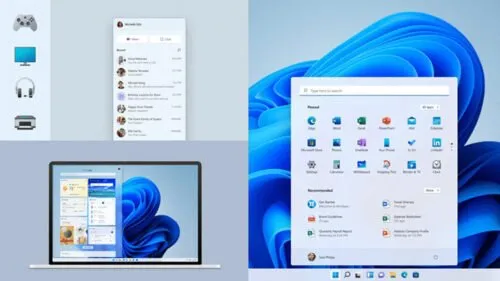History of Artificial Intelligence
Personal opinion: Artificial intelligence has allowed us to evolve our species in different areas and areas, medical or even in everyday life.
What is Artificial Intelligence?
Artificial Intelligence (AI) or "artificial intelligence" is a branch of computer science that is developing machines that can think and act like humans. Such as voice recognition, problem-solving, learning, and planning. It is the intelligence displayed by machines as opposed to the natural intelligence displayed by humans and animals.
By this, there is a plan to make such a computer-controlled robot or software, which can think in the same way as the human mind thinks. To make Artificial Intelligence perfect in this, it is constantly being prepared. In its training, it is taught experience from machines, to adjust to new inputs, and to perform human-like tasks.
So overall, with the use of Artificial Intelligence, such machines are being created, which can act intelligently on the data received by interacting with their environment. That is, if the AI concept becomes stronger in the future, then it will be like our friend. If you face any problem, what to do about it will tell you by thinking itself.
Artificial Intelligence (AI) is the ability of a machine or computer program to think and learn. This concept is based on the idea, that machines should be enabled to think about a problem like humans themselves, act on it, and learn from it.

Who is the father of Artificial Intelligence?
The invention of artificial intelligence is merely a phrase. The concept of artificial intelligence has been present since the last century, but to practice it in a form that mimics human behavior, was not done until the late 2000s. John McCarthy is credited to be the founder of artificial intelligence.
His research on him was actually to use artificial intelligence in a way that the machine thinks and acts like humans, providing a different and changing environment. His contributions from him in this field are worth mentioning as he took a whole new perspective in artificial intelligence, mainly focusing on learning algorithms and the computational capacity of the learning algorithms. This helped in increasing the research in developing powerful algorithms for learning the environment.
Year in which was called artificial intelligence.
Year 1956: The word "Artificial Intelligence" first adopted by American Computer scientist John McCarthy at the Dartmouth Conference. For the first time, AI coined as an academic field. At that time high-level computer languages such as FORTRAN, LISP, or COBOL were invented.
Who created First Artificial Intelligence?
A lot of development has been made in artificial intelligence throughout time. New systems emerged from the early 1900s, but it was not until 1929 that a major system came up from Japan which created waves around the world. Japanese biologist and a professor named Makoto Nishimura created a robot Gakutensoku. It was said to be the first robot which implied that it's artificially driven mind could grasp knowledge from people and surroundings and respond accordingly.
What are the Components of AI?
1.-Learning: one of the essential components of ai, learning for AI includes the trial-and-error method. The solution keeps on solving problems until it comes across the right results. This way, the program keeps a note of all the moves that gave positive results and stores it in its database to use the next time the computer is given the same problem. The learning component of AI includes memorizing individual items like different solutions to problems, vocabulary, foreign languages, etc., also known as rotate learning. This learning method is later implemented using the generalization method.
2.-Reasoning: the art of reasoning was something that was only limited to humans until five decades ago. The ability to differentiate makes Reasoning one of the essential components of artificial intelligence. For reason is to allow the platform to draw inferences that fit with the situation provided. Furthermore, these inferences are also categorized as either inductive or deductive. The difference is that in an inferential case, the solution of a problem provides guarantees of conclusion. In contrast, in the inductive case, the accident is always a result of instrument failure.
3.-Problem solving: in its general form, the AI's problem-solving ability comprises data, where the solution needs to find x. AI witnesses a considerable variety of problems being addressed on the platform. The different methods of ‘Problem-solving’ count for essential artificial intelligence components that divide the queries into special and general purposes. In the situation of a special-purpose method, the solution to a given problem is tailor-made, often exploiting some of the specific features provided in the case where a suggested problem is embedded. On the other hand, a general-purpose method implies a wide variety of vivid issues.
4.-Perception: in using the 'perception' component of Artificial Intelligence, the element scans any given environment by using different sense-organs, either artificial or real. Furthermore, the processes are maintained internally and allow the perceiver to analyze other scenes in suggested objects and understand their relationship and features. This analysis is often complicated as one, and similar items might pose considerable amounts of different appearances on different occasions, depending on the view of the suggested angle.
5.-Language-understanding: in simpler terms, language can be defined as a set of different system signs that justify their means using convention. Occurring as one of the widely used artificial intelligence components, language understanding uses distinctive types of language over different forms of natural meaning, exemplified overstatements. One of the essential characteristics of languages is humans' English, allowing us to differentiate between different objects. Similarly, AI is developed in a manner that it can easily understand the most commonly used human language, English. This way, the platform allows the computers to understand the different computer programs executed over them easily.
1.-Feature Engineering: Feature extraction is the process of identifying a proper nominal set of attributes or features from the given dataset of information. The performance highly depends on choosing the correct set of features instead of the wrong ones.
2.-Artificial Neural Networks: Artificial Neural Networks (ANN) also known as neural networks (NNs) is based on the collection of connected nodes known as artificial neurons just like human brain cells. Each connection transmits a signal from one neuron to another neuron after processing it. With the help of some nonlinear function, the output of each neuron generates a real number for a signal at a connection. The connections are also called edges. Neurons are aggregated in different layers for different transformations with the help of algorithms. Signals usually travel from the first layer to the last layer multiple times. There are two types of networks, one is a feedforward neural network, also known as acyclic in which signal travels only from one direction to another. Some common ones are perceptrons, multi-layer perceptrons and radial basis networks. The second type is a recurrent neural network which allows opinion and small memories of previous input events.
3.-Deep Learning: The modern world is stuffed with a lot of data and with the help of deep learning, the digital world is transforming into a beautiful place. It is a machine learning technique that automates computers to think just like humans. The architecture of this technique includes multiple hidden layers between the input and output layers as compared to Artificial Neural Networks. In the deep learning framework, it performs automatic features after extraction along with classification learning. It has significantly improved the performance of many programs such as computer vision, image classification, speech recognition and others. Despite complex architecture or numerous hidden layers, the performance of the model can be improved with high-performance parallel-computing GPUs.
4.-Natural language processing: Natural language processing is a subfield of linguistics, artificial intelligence, and computer science. It enables computers to understand human language in the form of text or spoken words (voice data) and understand it just like human beings. Whether the language is either spoken or written, NLP uses Artificial Intelligence to take it as input, process it and translate it in a way that the computer understands. Just like humans have ears to hear and eyes to see, computers take help of programs to read and microphones for audio. And just like human beings' process input with the brain, computers process it with programs and algorithms for respective inputs. And in the end, the input is converted into the form of code that the computer can understand.
5.-Intelligent Robotics: Robotics is the intersection of engineering, science and technology that produces programmable machines known as robots that can assist people or mimic human actions. Robots were originally built to handle monotonous tasks, but now it has expanded to perform domestically, commercially, and militarily. Each robot developed these days has a different level of autonomy to carry out tasks without any external influence, ranging from human-controlled bots to fully autonomous bots.
6.-Perception: Machine perception helps in taking inputs from the sensors (like cameras, wireless signals, and microphones), process it and deduce all aspects of it. Mainly, it is used in applications such as speech recognition, facial recognition, or object recognition. Computer vision is the one source that provides visual input analysis.
For facial recognition, Artificial Intelligence technology has helped audiences to recognize individual faces using biometric mapping. This path breaking technology compares the knowledge against the database of faces to find a match of it. Usually, this feature is used to authenticate employees or users from ID verification services for work or mobile phones. It works by pinpointing and calculating facial features from a saved image.
7.-Automate Simple and Repetitive Tasks: AI has an amazing ability to effectively handle monotonous tasks repeatedly without getting tired. To better understand in detail, let's take an example of SIRI, a voice enabled Virtual Personal Assistants created by Apple. As the name defines, it acts as an assistant and can handle multiple commands in a single day. Right from creating notes for a brief, rescheduling calendar for a specific meeting, to guiding users on the way with the help of navigation, SIRI covers it all. Earlier, these activities were supposed to be done manually which takes quite a lot of time and effort, but with voice-enabled assistants, you just need to speak, and it will get it done in a fraction of a second providing a safer work environment and increased efficiency. Other examples are Amazon Echo, Cortana and Google Nest.


















.png)
.png)



.png)
.png)
.png)
.png)

.png)
.png)
.png)
.png)
.png)
